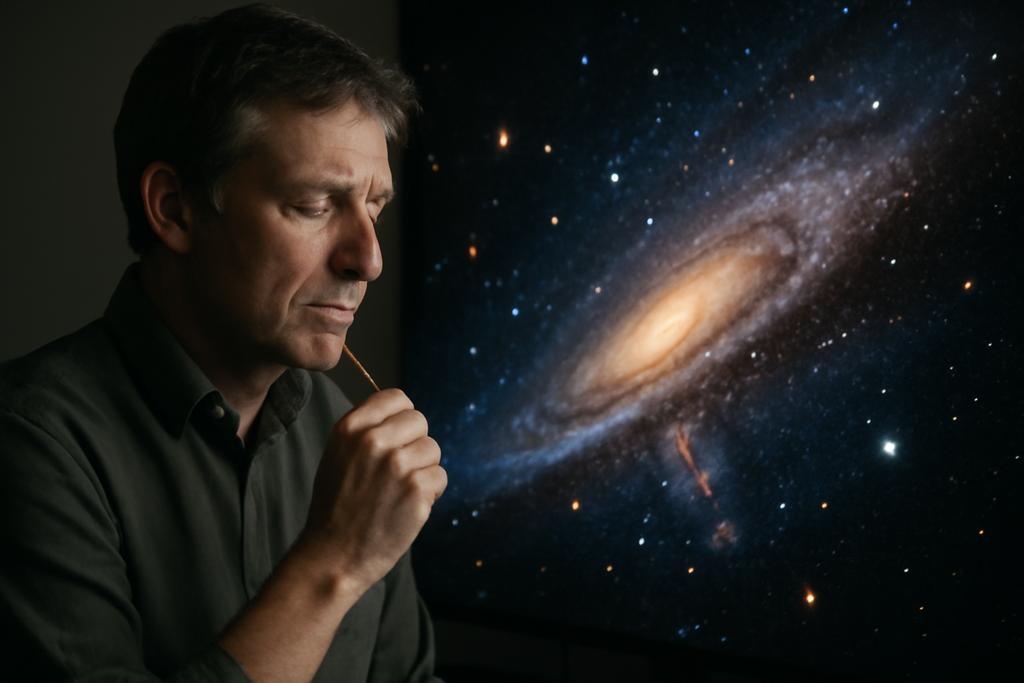The Puzzling Alignment of the Universe
Physicists have long been fascinated by the universe’s intricate workings, its fundamental laws governing everything from the smallest particles to the largest cosmic structures. Recently, a study by researchers at Stony Brook University has thrown a wrench into our understanding of the strong force—one of the four fundamental forces in nature—by revealing an unexpected alignment that defies current theoretical models. This alignment isn’t about stars and galaxies, but something far stranger: the spin alignment of phi mesons within quark-gluon plasma (QGP).
Imagine a swirling, superheated soup of quarks and gluons, the building blocks of matter, created in the aftermath of heavy-ion collisions. Within this chaotic environment, phi mesons, unstable particles that quickly decay, form. What’s remarkable is that these mesons exhibit a peculiar alignment in their spin—a characteristic they shouldn’t possess, according to our established theoretical understanding.
The Phi Meson’s Mysterious Spin
The study, led by Eduardo Grossi, Andrea Palermo, and Ismail Zahed, focuses on the phi meson, a type of particle that’s a flavor singlet, meaning its net quark flavor is zero. These mesons, formed from a strange quark and its antiquark, are produced during the high-energy collisions of gold atoms. Experiments, specifically those conducted by the STAR Collaboration, have shown a significant “spin alignment” in these phi mesons. What this means is that the axes of rotation of these particles show a non-random distribution, more aligned along a certain direction than would be expected by chance.
This is profoundly unexpected. While particles like the lambda hyperon exhibit spin *polarization* due to the effects of vorticity and shear within the QGP, the spin alignment of the phi meson is something different. It points to a different mechanism at work, one beyond what existing models, such as those based on quark coalescence or the effects of magnetic fields, can fully explain. The existing theories, while addressing spin polarization, completely fail to account for the magnitude of the observed phi meson spin alignment, which is two orders of magnitude higher than expected.
A Deep Dive into the Hadronic Phase
The researchers refined their model from previous work by incorporating new factors into their calculations. This included the influence of nucleon scatterings (interactions with protons and neutrons) in the “hadronic phase” of the QGP — the stage after the initial high-energy collision, when the QGP cools and forms ordinary matter. They made use of sophisticated hydrodynamic simulations, specifically the Fluidum code, to model the QGP’s evolution and calculate the spin density matrix of the phi mesons.
The researchers meticulously tuned their parameters to ensure their model accurately predicted the observed transverse momentum spectra of the phi mesons, essentially calibrating their model with existing data. This is crucial because it reduces the chance that the model is simply fitting the spin alignment data by chance, without actually reflecting reality. The study focused on collisions with various beam energies, ranging from 11.5 GeV to 200 GeV, covering a broad range of conditions.
The Unsatisfying Answer
The results, however, were surprising. Even with the added complexity of nucleon interactions and realistic hydrodynamic backgrounds, the model failed to reproduce the high level of spin alignment observed experimentally. The predicted alignment, while not exactly zero, was far too weak. This indicates a critical gap in our understanding. The model shows that the interactions with kaons and viscous corrections play a greater role than those with nucleons. The nucleons’ contribution to the spin alignment is negligible unless one assumes unrealistically high coupling constants, effectively ruling out this mechanism as the prime explanation.
The study suggests that the key to this mystery may lie in the early stages of the heavy-ion collision, before the hadronic phase. The surprising alignment points to a phenomenon occurring before the QGP reaches the cooler temperatures of the hadronic phase, where existing models falter in explaining such a high degree of alignment.
Implications and Future Research
The implications of this research are significant. The unexpected phi meson spin alignment challenges our current theoretical models of the strong force. It highlights the need for refined theoretical approaches and potentially, new physical mechanisms to fully understand the dynamics of QGP. This discrepancy serves as a valuable clue—a tantalizing hint that our understanding of the strong force at high densities and temperatures is incomplete. It urges a deeper exploration of the fundamental processes occurring at the earliest moments of heavy-ion collisions, a realm teeming with unknown physics.
Future research will undoubtedly focus on exploring alternative mechanisms, such as the role of fluctuating strong fields in the early stages of the collision, or potentially interactions between the phi mesons and other particles before they reach the hadronic phase. This finding opens a new window into the complex world of particle physics at extreme energies, signaling a potential revolution in our understanding of the strong interaction.










